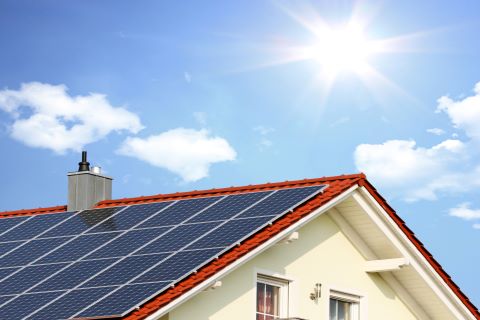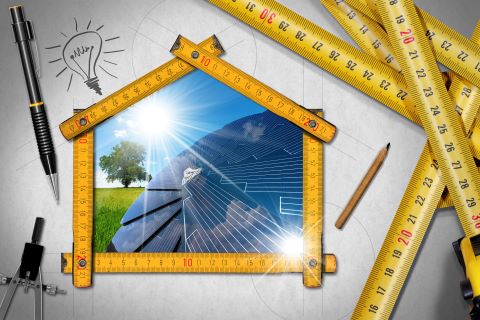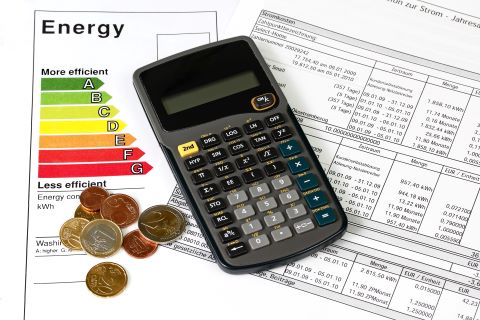When shopping for the best solar panels for your home, you may notice that many solar companies advertise "high energy yields at low irradiance."
You might be thinking, What the heck is irradiance?
You may be able to guess that it has something to do with radiation - radiance, radiation - and you would be correct.
In plain language, it is how much solar power you are getting at your location.
What does this have to do with solar panels? Everything!

Solar panels collect light from the sun to turn it into electricity. The efficiency of solar panels depends on the amount of light the panels receive at their location - or solar irradiance.
For example: on days when the sun is direct overhead, shining bright, you will have high irradiance and your solar panels will generate more solar energy.
On cloudy days there is low irradiance, meaning less light makes it to your solar panels and they will produce less energy.
So when solar manufacturers advertise high efficiency at low irradiance, they are saying that even in conditions where there is less light available to convert to solar energy, your solar panels will produce more energy compared to other products in the industry.
Factors that have an impact on solar irradiance
Some of the things that may reduce solar irradiance - and thus, the amount of energy produced by your solar system overall - include:
- cloud cover or fog
- heavy air pollution
- dust
- smoke
- position of the sun
- position of your panels
- seasons
- shade
- physical debris, like leaves or snow

Ways to maximize solar irradiance and the energy efficiency of your panels
Positioning
The first thing you can do to ensure your solar panels are taking advantage of the most light is to position them to face the sun - usually south - and out of any shade that may fall over your roof so that they receive the most light possible throughout the day as the sun moves across the sky.
That’s why some houses may be better suited than others for rooftop solar panels - if your roof doesn’t face the sun, you’ll produce a lot less energy.
If this is the case, you might be better off installing a ground-mounted solar system, or solar carport. Or, you can buy space in a solar farm.
Maintenance
Another way you can increase solar irradiance and make your panels more efficient is to maintain them regularly, keeping them clean and free of dust and debris.
If particles of dust and dirt are covering your panels, they will receive less light and produce up to 20% less energy.
You’ll also want to be sure to clear any leaves, snow, or ice that may accumulate throughout the year and cover your panels.
Other than that, your control over how much sun your panels receive may be limited - after all, you can’t change the weather or magically clear the air of pollution. Though, by installing solar and reducing your carbon footprint, you are helping the world get one step closer to cleaner air, which could mean greater solar efficiency in the future. So go you!
Calculating solar irradiance over time, or the average amount of energy your solar system may generate per day
Solar irradiance is also useful to help determine solar insolation, or how much energy your solar system may produce on average in a given time period - and thus, how much you can expect to save on energy costs.
You can use a solar insolation calculator to determine average figures for energy generation at your location.
For example, for somebody living in Los Angeles, California, with a 6-kW roof mounted system facing south with average angle and so on, the average energy output is 10,012 kWh/Year.

Calculating average energy cost savings
Once you know the average daily amount of energy your system produces, you can compare this to the average amount of energy you use and the cost of electricity from the utility company to see how much solar energy is saving you on electric bills.
In our Los Angeles example, our solar system produces 10,012 kWh/Year. In Los Angeles, the average electricity consumption is 573 kWh per month, or 6,876 kWh/Year. Already, this solar system is saving by producing more energy that we use.
With electricity costs projected to average about 32 cents/kW over the next 25 years, our sample electricity costs per year are about $2,200. That means that, since our solar system covers all our energy needs, we're saving about $55,000 over the entire life of our solar system in electricity bills. When we subtract the average cost of installing a 6-kW system in LA at about $18,150, this means we will save $36,850 over the entire life of our solar system (without considering any incentives or tax credits).
How's that for awesome?
You can also use this calculator to determine how long it will take to pay off the cost of solar installation based on your energy production, savings, and the cost of your system.
That’s it for today’s mini science lesson!
We hope you enjoyed learning about solar irradiation and how it can help you save on energy costs with solar.
Did you figure out how much you can save? Leave a note in the comments!
To see if your roof is right for solar panels, enter your address into the HahaSmart DIY Design Tool to customize your own rooftop solar array.
Then, see how much you can save on solar installation in your area with the HahaSmart Price Checker, and start reducing your electricity costs today!


Input your address to see if it is solar friendly and how much you can save with solar.
Great. Your address is perfect for solar. Solar incentive is still available. Select monthly utility cost and calculate the size of solar system you will need now.
| kw System size | years Payback period | Lifetime savings |
No money down, 100% finance is available.
|
|
Save on Energy Costs With Rooftop Solar - Sign Up Today |
Comments